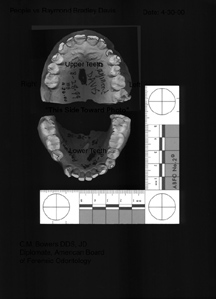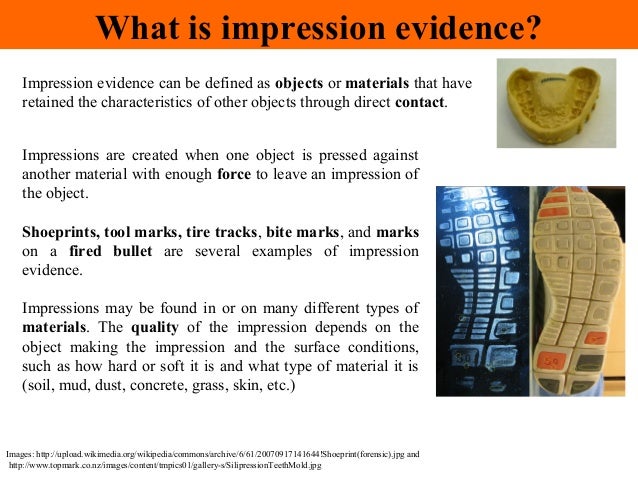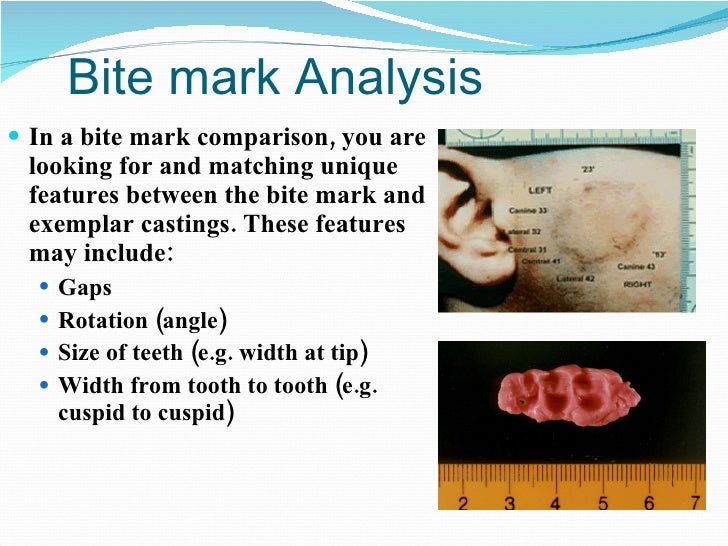

Current research carried out at the Katholieke Universiteit Leuven will demonstrate whether the computer program ForensicIQ is able to offer an even more precise comparison between a given bite mark and the dentition of a suspect. points of comparison may be used when comparing dental impressions and bite-mark impressions. Thanks to modern technology and the use of computers, analyses of bite marks have gradually become more accurate. Among the most commonly used are hand-tracing of study models, wax bites or photocopies, or the radio-opaque wax bite method. The overlay, which can be created using a variety of methods, allows the comparison between the bite mark and the dentition of the suspect. Subsequently, the acquired information of the bite mark will be compared with the dentition of a suspect through photographs, intra- and extra oral examination and impressions.

If a victim is bitten by a perpetrator during a crime and police have a suspect, odontologists can attempt to match the bite mark to the suspect’s teeth. The initial inquiry with bite mark evidence is to ascertain if the impression was left by a person or an animal. Bite mark evidence, an aspect of forensic odontology, is the process by which odontologists (dentists) attempt to match marks found at crime scenes with the dental impressions of suspects. Different materials for impressions are available to the forensic odontologist. Bite mark evidence has been a prosecution tool since the 1950s, especially in burglary, homicide, child abuse, and rape cases. Pattern evidence may be additional identifiable information found within an impression, such as the examination of shoeprint evidence to identify a. Even this breakthrough was useless without a set of. Impression evidence is created when two objects come in contact with enough force to cause an impression, such as a fingerprint or the marks on a bullet caused by the barrel of a firearm. After two years, investigators finally noticed a set of bite marks on Brown’s shoulder. By the 1980s, the technique had gained widespread judicial acceptance. two-dimensional impressions that are already visible. Courts have admitted bite mark comparison evidence in homicide, rape, and child abuse cases.

hidden impressions requiring special techniques to be visualized. Although the crime appeared to be rushed and poorly planned, there seemed to be no evidence pointing toward a suspect. three-dimensinal impressions cast in soft materials, such as soil and snow. Precise photographs, supplemented by impressions are used to research and compare bite marks. Her name was Karla Brown, and she had been brutally beaten, raped, and murdered. Collection of Bite Mark Evidence from the Bite Mark Victim: Both in the living and deceased victims the following vital information should be recorded: Demographics-Name, age, sex, race, case number, date of examination and name of the examiners should be recorded.


 0 kommentar(er)
0 kommentar(er)
